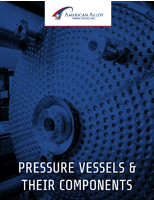Data Acquisition Modules offer 15-Bit Resolution.
Press Release Summary:
 SCM9B-D100 Series 500 Vrms isolated, software configurable, single-channel data acquisition modules includes 27 models that convert analog input signals to digital data and transmit via RS-485 to controller. One model provides digital output signals. They also perform signal conditioning, scaling, linearization, and conversion to either linearized ASCII data values or Modbus RTU data values. Configuration software is included.
SCM9B-D100 Series 500 Vrms isolated, software configurable, single-channel data acquisition modules includes 27 models that convert analog input signals to digital data and transmit via RS-485 to controller. One model provides digital output signals. They also perform signal conditioning, scaling, linearization, and conversion to either linearized ASCII data values or Modbus RTU data values. Configuration software is included.Original Press Release:
DIN Rail Mount Single-Channel Data Acquisition Modules Offer 15-Bit Resolution & 500Vrms Isolation
Dataforth Corporation, Tucson, Arizona announces the introduction of its new SCM9B-D100 Series of isolated and software configurable single-channel data acquisition modules. Twenty-seven models of the SCM9B-D100 make up a family that converts analog input signals to digital data and transmits via RS-485 to a controller, which may be a computer or other processor-based equipment. The modules interface directly to thermocouples, RTDs, thermistors, strain gages, voltages, currents, timer and frequency inputs, and digital input signals. One model provides digital output signals. In addition, the modules perform signal conditioning, scaling, linearization and conversion to either linearized ASCII data values or Modbus RTU data values.
Features such as address, baud rate, parity, and echo are selectable using simple commands over the RS-485 port. The selections are stored in nonvolatile EEPROM, which maintains data even after power is removed. Configuration software is included and is described below.
Data is acquired on a per-channel basis so the user only buys as many channels as is required. The modules can be mixed and matched to fit any application. They can be placed remote from the host and from each other. Up to 247 modules can co-exist on a twisted pair of wires over a distance of 4000 feet (1220 meters) by using RS-485 with repeaters.
All modules are supplied with screw terminal plug connectors that allow system expansion, reconfiguration or repair without disturbing field wiring.
Theory Of Operation
Each Dataforth module is a complete single-channel data acquisition system. Each unit contains analog signal conditioning circuits optimized for a specific field input type. Input signals are converted to digital data with a microprocessor-controlled integrating A/D converter. Offset and gain errors in the analog circuitry are continuously monitored and corrected using microprocessor techniques. The D100 converts the digital signal data and stores the resultant data in a memory buffer. The modules continuously convert data at the rate of 8 conversions per second and store the latest result in the buffer.
Host processors may request data by sending a query to the module. The D100 will instantly respond by communicating the memory buffer data back to the host processor. Each module is identified by a unique user-programmable address that allows modules to be interrogated in any order.
Digital Inputs/Outputs
SCM9B-D170 digital input/output modules contain open-collector transistor switches that may be controlled by the host processors. These switches may be used to control solid state relays, which in turn may control heaters, pumps and other power equipment. The digital inputs may be read by the host processor and used to sense the state of remote digital signals.
Digital Filter
All of the SCM9B-D100 analog input modules include two unique programmable single-pole digital filters. The filter is used to smooth analog data in noisy environments. Separate time constants may be specified for small and large signal changes. Typically, a large time constant is specified for small signal changes to filter out noise and provide stable output readings. A smaller time constant may be chosen for large signal changes to provide fast response to such changes.
Command Set
The D100 series uses the Modbus RTU or the Dataforth ASCII protocol for communication. The Modbus RTU binary protocol uses a master-slave technique, in which only the master device can initiate transactions. The slave devices respond by supplying the requested data to the master or by taking the action requested in the query. The master can address any slave device. The returned messages are considered response messages. The supported master codes are:
Modbus RTU Functions and Descriptions
01 Read Coil Status (Digital Inputs)
04 Read Input Register (Analog Inputs)
05 Force Single Coil (One Digital Input)
06 Preset Single Register (Dataforth/RTU Protocol)
15 Force Multiple Coils (Multiple Digital Output)
The Dataforth ASCII protocol is a command and response protocol using ASCII characters for easy troubleshooting and interpretation of data values.
Utility Software
Complimentary Utility Software is included with each purchase order. The software is compatible with Windows 95, 98, NT 4.0+, 2000 operating systems and distributed on CD-ROM. The Utility Software simplifies configuration of all user-selectable options such as device address, baud rate and filtering constants.
The SCM9B-D100 has 500Vrms transformer isolation between input to output. The signal conditioners require +5VDC power. Packaging is a compact DIN rail mountable case measuring only 3.00 x 1.00 x 3.30 inches (76.2 x 25.4 x 83.8mm). Accuracy is ±0.02% typical for voltage inputs, and operating temperature range is -25°C to +70°C. Prices for the SCM9B-D 100 series start at $140.
For additional information, call 800-444-7644 toll-free or visit our web center at www.dataforth.com. Dataforth Corporation, 3331 E. Hemisphere Loop, Tucson, AZ 85706 USA. Telephone 520-741-1404, Fax 520-741-0762, E-mail sales@dataforth.com.
Dataforth Corporation was established in 1984 and is a worldwide leader in the design and manufacture of signal conditioning and data communications products for industrial and institutional markets. The Company offers a broad range of analog and digital I/0 modules, two-wire transmitters, industrial data modems, and modem systems.




